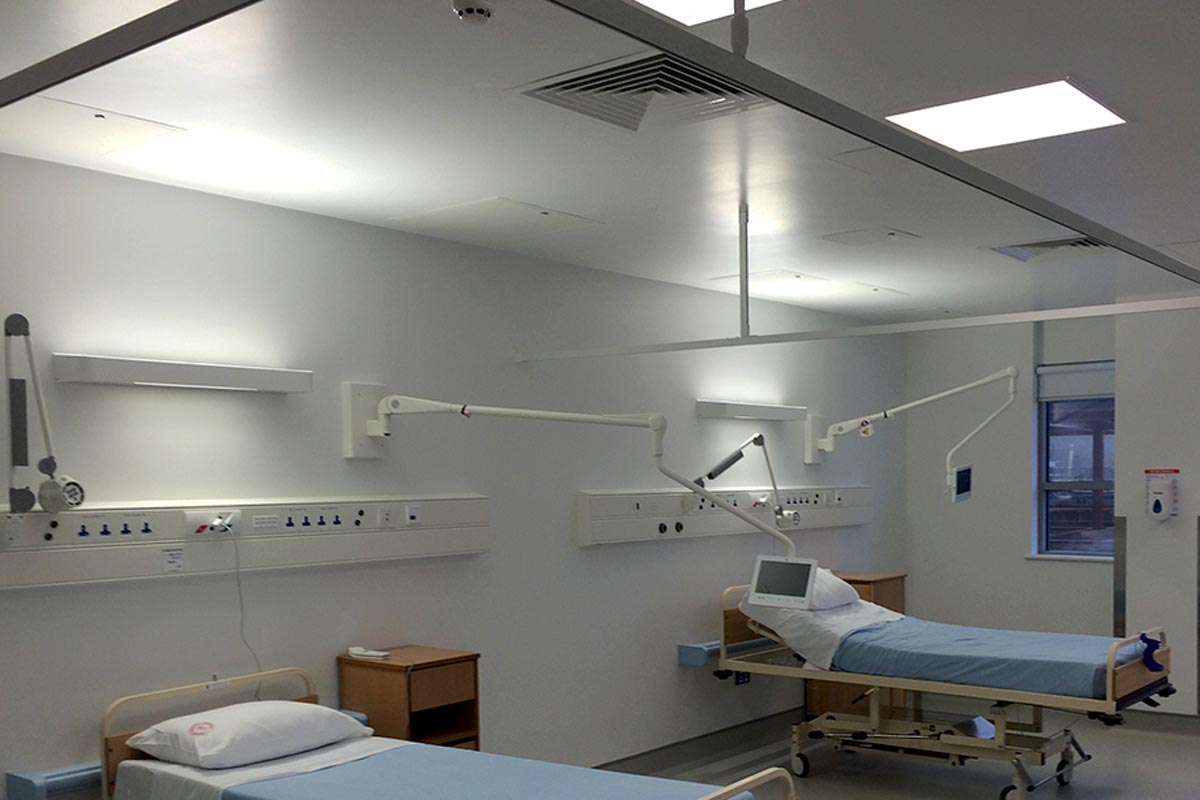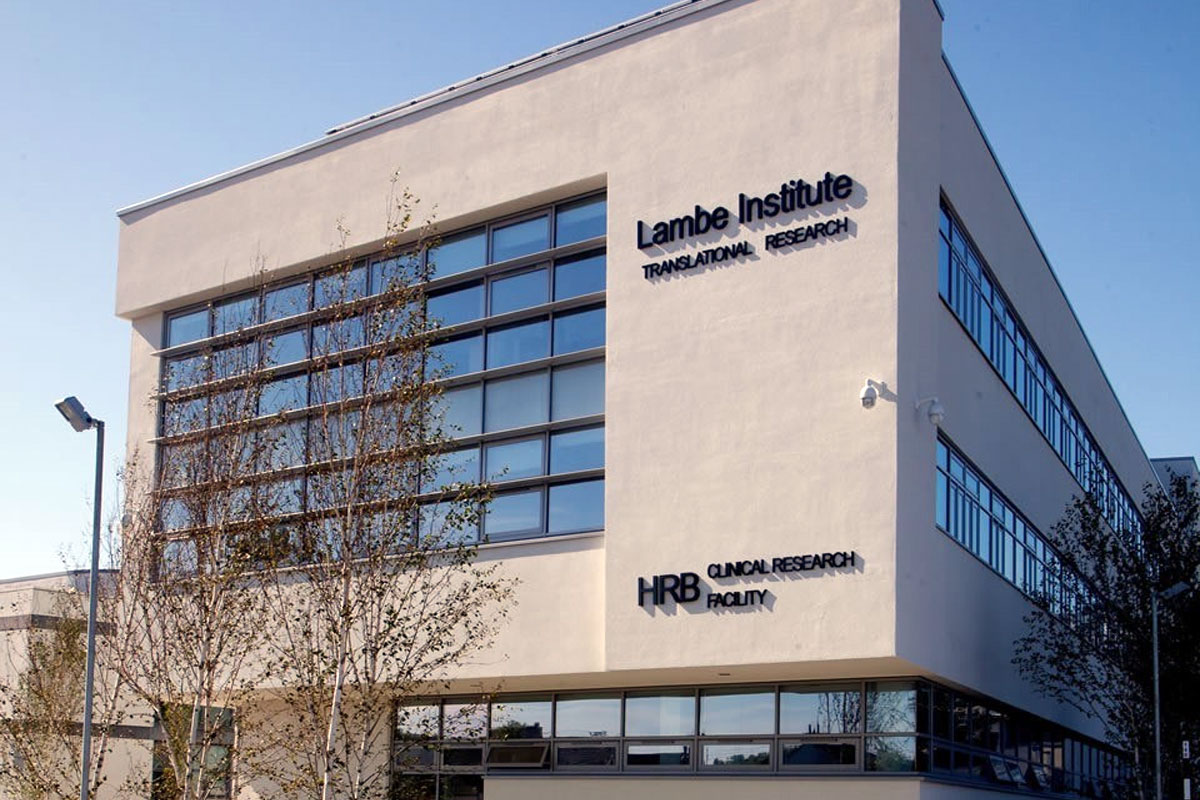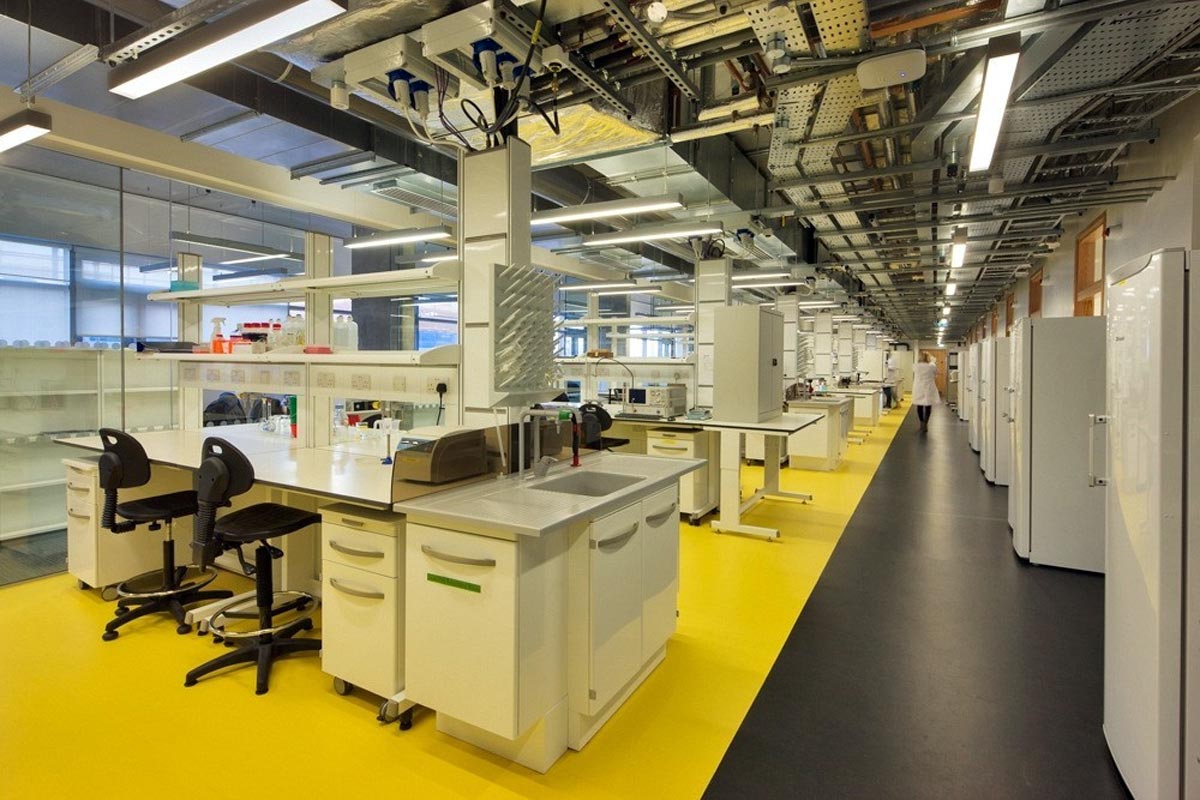The Lambe Institute for Translational Research was opened by An Taoiseach, Enda Kenny in 2015. Built on the grounds of University Hospital Galway, it further enhances an ecosystem that links education, research, innovation and healthcare in the west of Ireland.
The Lambe Institute for Translational Research together with the Health Research Board, Clinical Research Facility in the same building represents an innovative partnership between University of Galway, Health Research Board, Saolta University Health Care Group and Health Services Executive. The development of the building was supported by Dr Ronan and Ann Lambe, Bank of Ireland, National Breast Cancer Research Institute, Mayo Pink Ribbon and the extraordinary contribution of the Corrib Medical Network
This facility represents the nexus of research and its translation into the clinical setting. It is the point at which 'bench' meets 'bedside'. Clinical and scientific researchers aligned to University of Galway's strategic priority areas of cancer and medical device technology work on the upper two levels in the Lambe Institute for Translational Research.
On the lower two levels these scientific advances are carefully applied in a clinical setting in the Health Research Board Clinical Research Facility. Currently there are over 100 clinical trials underway involving people with cancer, diabetes, cardiovascular disease, amongst others. As University of Galway's profile as a centre of biomedical research continues to grow, with research groups such as CÚRAM, REMEDI, BCR and many others, making major contributions to pressing medical challenges, this facility is a tremendous national and international resource.
Some examples of the types of studies undertaken in the Lambe Institute for Translational Research will include:
- Predicting risk of breast cancer due to inherited characteristics.
- Stem cell trials to help improve blood flow in legs of diabetic patients and prevent amputation.
- Clinical trials in blood cancer patients to establish whether new treatments can be combined with existing treatment for better outcomes.
- How implantable medical devices can provide new solutions for patients.





